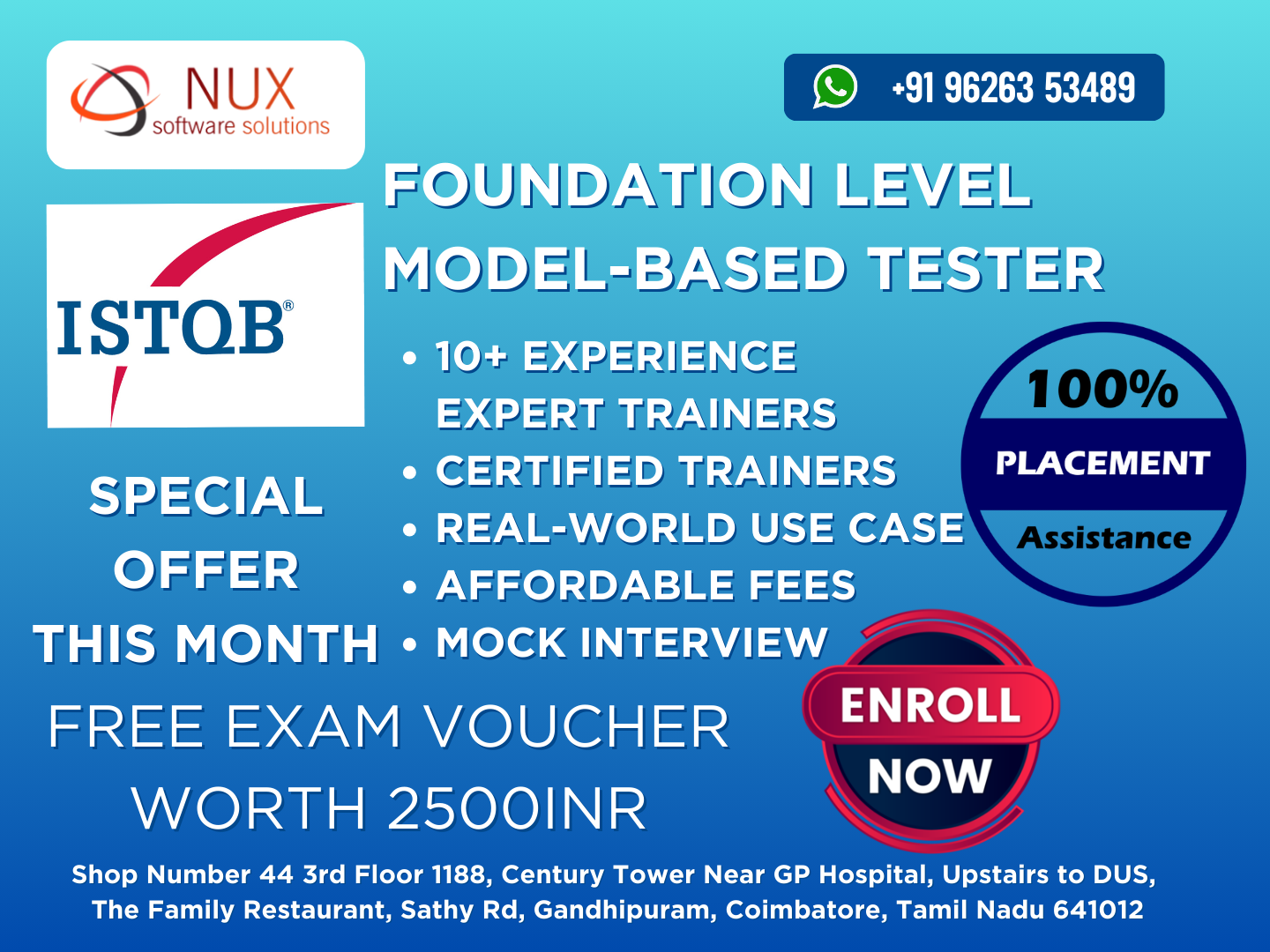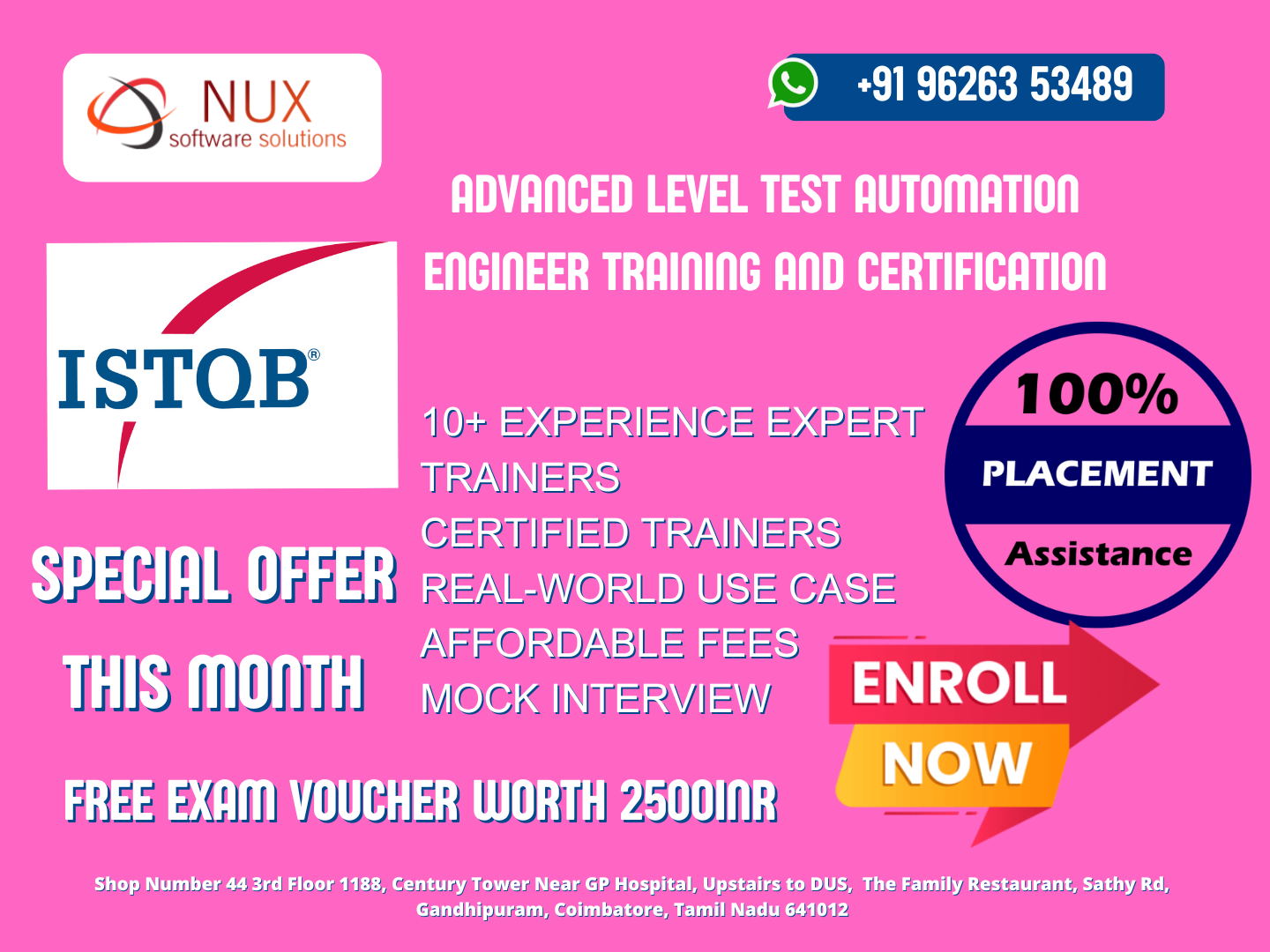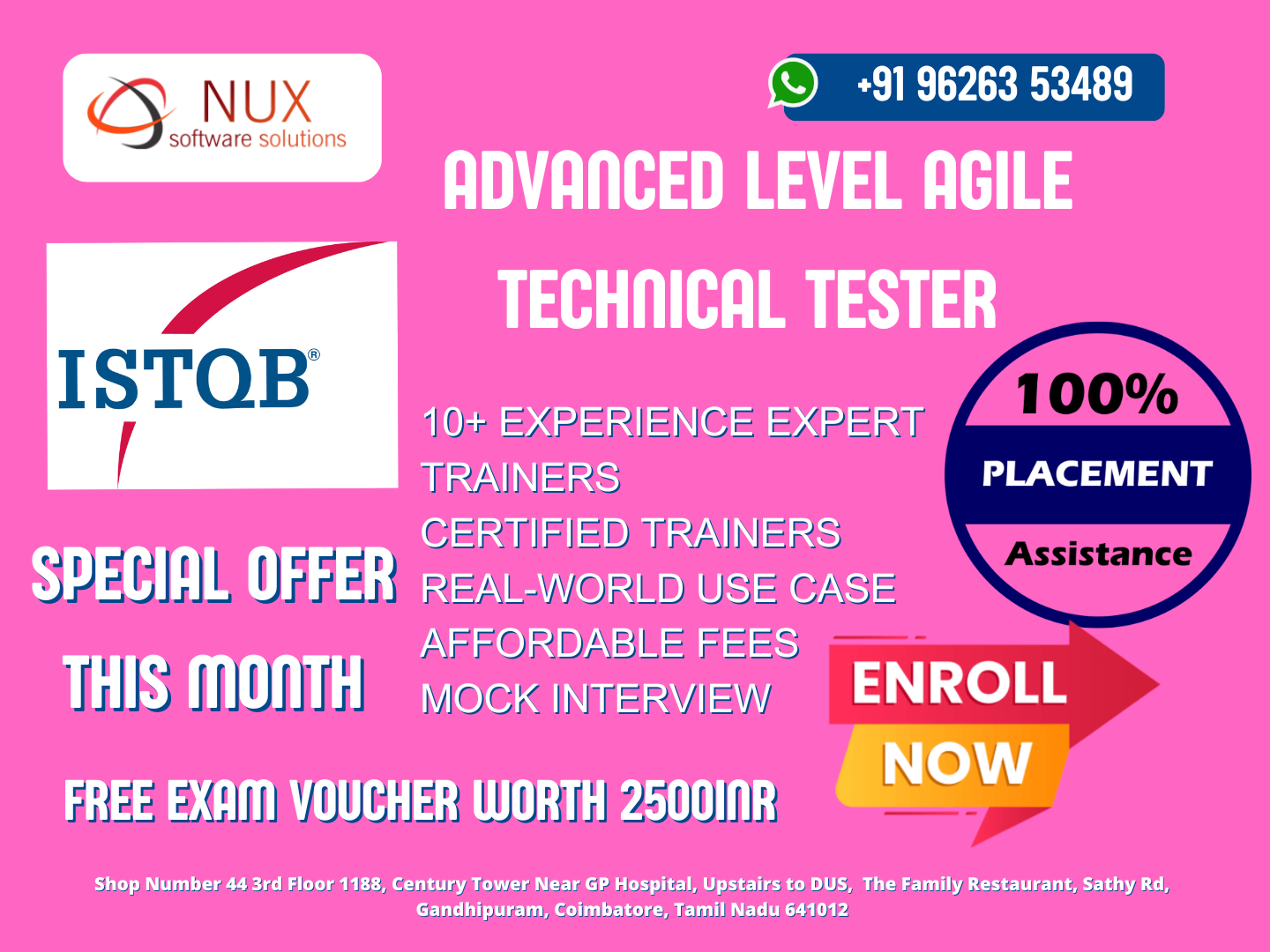Foundation Level Model-Based Tester Training


Best Foundation level Model -Based Tester Certification training courses classes deliver by Nux software solutions in coimbatore. Nux software solutions in coimbatore has excellent and advanced training programs that will give you better performance & hands on experience. Our industry’s expert trainers offer a wide range of skills and experience in their graded areas.
The Training center environment is too good for professional, individual, corporate, live project training and industrial training. Labs infrastructure is advanced, well managed and you can access LAB 24X7 from anywhere. Training center has international expert trainers and they have excellent knowledge, real time industry experience.
Our Training programs combine with several innovative learning methods and delivery models. We understand your requirement and it will give you 100 percent growth for your career and provide the cost effective training programs and also work with flexibility for the trainees.
This Foundation level usability testing course is designed to teach participants the essentials of usability and how to effectively evaluate usability, user experience and accessibility. You will learn how to plan and prepare for usability testing and select the most appropriate testing location and participants. After understanding the application of usability reviews, testing and surveys you will be able to propose the most effective usability testing approach.
Testers, test analysts, test engineers, test consultants, test managers, user acceptance testers, and software developers working on usability issues will find this course useful, informative, and fun. We suggest that attendees hold the ISTQB Foundation Level certificate, especially if they intend to take the ISTQB Usability Tester exam, but non-certificate holders can benefit from the course.
Course Syllabus
Module
Introduction to this Syllabus
0.1 Purpose of the Document
0.2 Overview
0.3 Learning Objectives
1.0 Introduction to Model-Based Testing
1.1 Objectives and Motivations for MBT
1.1.1 Main Motivations for MBT
1.1.2 Misleading Expectations and Pitfalls of MBT
1.2 MBT Activities and Artifacts in the Fundamental Test Process
1.2.1 MBT Specific Activities
1.2.2 Essential MBT Artifacts (Inputs and Outputs)
1.3 Integrating MBT into the Software Development Lifecycles
1.3.1 MBT in Sequential and Iterative Software Development Lifecycles
1.3.2 Supporting Requirements Engineering
2.0 MBT Modeling
2.1 MBT Modeling
2.1.1 MBT Modeling Activities
2.1.2 Subject and Focus of MBT Models
2.1.3 MBT Models Depend on Test Objectives
2.2 Languages for MBT Models
2.2.1 Main Categories of Modeling Languages for MBT
2.2.2 Language Categories Relevant for Different Systems and Project Objectives
2.3 Good Practices for MBT Modeling Activities
2.3.1 Quality Characteristics for MBT Models
2.3.2 Typical Mistakes and Pitfalls in MBT Model Design
2.3.3 Linking Requirements and Process Related Information to the MBT Model
2.3.4 Modeling Guidelines for MBT
2.3.5 Reuse of Existing System Design or Requirements Models
2.3.6 Tool Support for Modeling Activities
2.3.7 Iterative Model Development, Review and Validation
3.0 Selection Criteria for Test Case Generation
3.1 Classification of MBT Test Selection Criteria
3.1.1 Test Selection Criteria
3.1.2 Test Case Selection in Practice
3.1.3 Examples of Test Selection Criteria
3.1.4 Relation to Foundation Level Test Design Techniques
3.2 Applying Test Selection Criteria
3.2.1 Degree of Automation in Test Generation
3.2.2 Pros and Cons of Specific Test Selection Criteria
3.2.3 Good Practices of MBT Test Selection
4.0 MBT Test Implementation and Execution
4.1 Specifics of MBT Test Implementation and Execution
4.1.1 Abstract and Concrete Test Cases in the MBT Context
4.1.2 Different Kinds of Test Execution
4.1.3 The Impact of Changes on the MBT Artifacts
4.2 Activities of Test Adaptation in MBT
5.0 Evaluating and Deploying an MBT Approach
5.1 Evaluate an MBT Deployment
5.1.1 ROI Factors for MBT Introduction
5.1.2 Organizational Objectives and their Relationship to the Characteristics of the MBT Approach
5.1.3 Metrics and Key Performance Indicators
5.2 Manage and Monitor the Deployment of an MBT Approach
5.2.1 Good Practices when Deploying
5.2.2 Cost Factors of MBT
5.2.3 Integration of the MBT Tool


